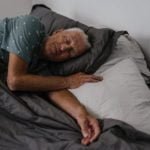
Hypoglycemia : Low blood sugars
Hypoglycemia- Low blood glucose
Dr.Vipul Agarwal
MBBS, MD (Internal Medicine), FAGE
Assistant Professor, Department of Internal Medicine
Mahatma Gandhi medical college, Jaipur
You can find me at-
E-mail: vipul.msrmc@gmail.com
Hypoglycemia is the medical term for low blood glucose (blood sugar). People with type 1 diabetes who need to take insulin to control their blood glucose levels are at risk for getting hypoglycemia. People with type 2 diabetes who take insulin and/or certain other medications (eg, glimepride, glibenclamide etc) can also develop hypoglycemia. The frequency of hypoglycemia among people with longstanding type 2 diabetes increases over time, as the body eventually stops making enough insulin.
HYPOGLYCEMIA CAUSES
Low blood glucose can happen if you:
- Take too much insulin
- Take too much of oral diabetes medications that cause your body to release more insulin (eg, sulfonylureas, meglitinides)
- Do not eat enough food or fasting for long periods
- Exercise vigorously without eating a snack or decreasing your insulin dose beforehand
- Wait too long between meals
- Drink a lot of alcohol
HYPOGLYCEMIA SYMPTOMS
The symptoms of low blood glucose vary from person to person and can change over time. During the early stages of low blood glucose, you may:
- Sweat
- Tremble
- Feel hungry
- Feel anxious
If untreated, symptoms can become more severe and can include:
- Difficulty walking
- Weakness
- Difficulty seeing clearly
- Bizarre behavior or personality changes
- Confusion
- Passing out or having a seizure
When possible, you should confirm that you have hypoglycemia by measuring your blood glucose level.. A glucose level of ≤70 mg/dL indicates the possibility of developing more serious hypoglycemia. Action may be needed to prevent the glucose from getting even lower. Serious hypoglycemia is generally defined as a blood glucose below 54 mg/dL. This level of hypoglycemia should be immediately treated. Severe hypoglycemia is defined as an event during which you are confused or pass out and need the help of another person for recovery, regardless of your glucose level.
Some people with diabetes develop symptoms of low blood glucose at slightly higher levels. If your blood glucose levels are high for long periods of time, you may notice symptoms before your blood glucose gets below 70 mg/dL. Getting your blood glucose under better control can help to lower the blood glucose level when you begin to feel symptoms.
HYPOGLYCEMIA PREVENTION
To prevent low blood glucose, it is important to monitor your blood glucose levels frequently and be prepared to treat it promptly at any time. You and a close friend or relative should learn the symptoms and always carry glucose tablets,glucose powders, hard candy, or other sources of fast-acting carbohydrate so you can treat low blood glucose if it does happen.
Glucose tablets are recommended since they have a pleasant taste, but you are not likely to eat them unless your blood glucose is low. Candy can be tempting to eat, even when blood glucose levels are normal, especially for children with diabetes.
If you experience low blood glucose levels, let your health care provider know. They can help adjust your diabetes treatment plan to reduce the chances of hypoglycemia happening again. They can also talk to you about blood glucose awareness education. Blood glucose awareness training can improve your ability to recognize low blood glucose earlier, which will allow you to treat it quickly and avoid more serious symptoms. A trained diabetes educator can also work with you to help you anticipate when low glucose levels are more likely to happen.
Low blood glucose can be frightening and unpleasant. If you have experienced this before, you may be worried or anxious about the possibility of it happening again. However, it’s important to talk to your health care provider and not just intentionally keep your blood glucose high because of this. High blood glucose levels can lead to serious long-term complications.
HYPOGLYCEMIA TREATMENT
The treatment of low blood glucose depends on whether you have symptoms and how severe the symptoms are.
No symptoms — Your health care provider will talk to you about what to do if you check your blood glucose and it is low, but you have no noticeable symptoms. They might recommend checking your levels again after a short time, avoiding activities like driving, or eating something with carbohydrates.
Early symptoms — If you have early symptoms of low blood glucose, you should check your level as soon as possible. However, if your monitoring equipment is not readily available, you can go ahead and give yourself treatment. It’s important to treat low blood glucose as soon as possible.
To treat low blood glucose, eat 15 to 20 grams of fast-acting carbohydrate. You can do this by eating 3 or 4 glucose tablets or 6 to 8 hard candies, or drinking 1/2 cup of fruit juice.
This amount of food is usually enough to raise your blood glucose into a safe range without causing it to get too high. Avoid foods that contain fat (like candy bars) or protein (such as cheese) initially, since they slow down your body’s ability to absorb glucose.
Check your blood glucose again after 15 minutes and repeat treatment if your level is still low. Monitor your blood glucose levels more frequently for the next few hours to ensure your blood glucose levels are not low.
Severe symptoms — If your blood glucose is very low, you may pass out or become too disoriented to eat. A close friend or relative should be trained to recognize severe low blood glucose and treat it quickly. Dealing with a loved one who is pale, sweaty, acting bizarrely, or is passed out and convulsing can be scary. A dose of glucagon stops these symptoms quickly.
Glucagon is a hormone that raises blood glucose levels. Glucagon is available in emergency kits (as an injection or a nasal spray), which can be bought with a prescription in a pharmacy. Directions are included in each kit; a roommate, partner, parent, or friend should learn how to give glucagon before an emergency occurs.
It is important that your glucagon kit is easy to locate, is not expired, and that the friend or relative is able to stay calm. You should refill the kit when the expiration date approaches, although using an expired kit is unlikely to cause harm.
Glucagon is available as an injection (shot) or as a nasal spray:
- Injectable glucagon – This comes in a prefilled syringe or an autoinjector “pen” The shot should be given in the upper arm, thigh, or abdomen.
- Nasal spray – Nasal glucagon is given by placing the tip of the device in one nostril and pushing a small plunger. This releases the powder into the person’s nostril without requiring them to inhale or do anything else.
If you have to give another person glucagon, turn them onto their side afterwards. This prevents choking if they vomit, which sometimes happens.
Low blood glucose symptoms should resolve within 10 to 15 minutes after a dose of glucagon, although nausea and vomiting may follow 60 to 90 minutes later. As soon as the person is awake and able to swallow, offer a fast-acting carbohydrate such as glucose tablets or juice.
If the person is not conscious within approximately 15 minutes, call for emergency help (Dial 108 in India) and give the person another dose of glucagon, if a second kit is available.
In case patient is not carrying glucagon, you can take glucose powder and smear it inside patient’s mouth over cheek and toungue, while patient is lying on the sides
FOLLOW-UP CARE
After your blood glucose level normalizes and your symptoms are gone, you can usually resume your normal activities. If you required glucagon, you should call your health care provider right away. They can help you to determine how and why you developed severely low blood glucose and can suggest adjustments to prevent future reactions.
In the first 48 to 72 hours after a low blood glucose episode, you may have difficulty recognizing the symptoms of low blood glucose. In addition, your body’s ability to counteract low blood glucose levels is decreased. Check your blood glucose level before you eat, exercise, or drive to avoid another low blood glucose episode.
WHEN TO SEEK HELP
A family member or friend should take you to the hospital or call for emergency assistance immediately if you:
- Remain confused 15 minutes after being treated with glucagon
- Are unconscious (or nearly unconscious) and glucagon is not available
- Continue to have low blood glucose despite treatment with a fast-acting carbohydrate or glucagon
Once in a hospital or ambulance, you will be given treatment intravenously (by IV) to raise your blood glucose level immediately. If you require emergency care, you may be observed in the emergency department for a few hours before being released. In this situation, you will need someone else to drive you home.
WHERE TO GET MORE INFORMATION
Your health care provider is the best source of information for questions and concerns related to your medical problem.
Join the mailing list!
Get the latest articles delivered right to your inbox!






